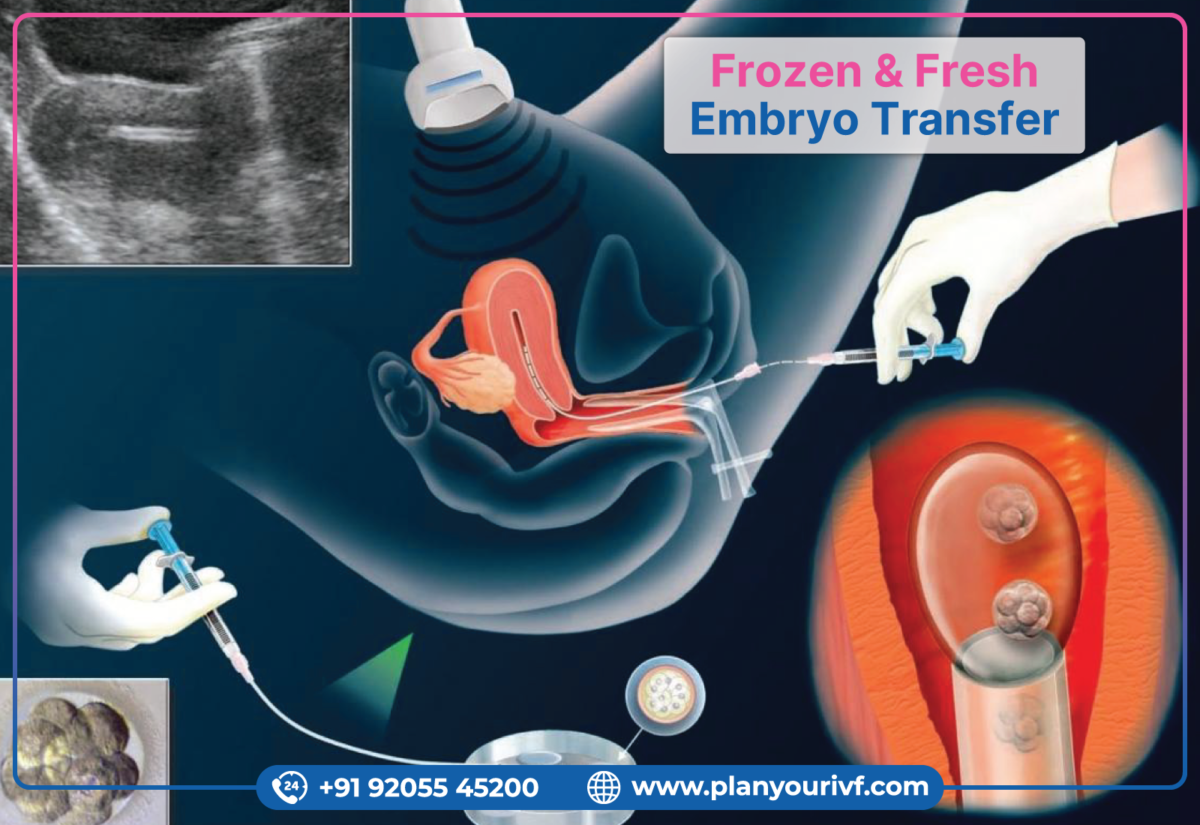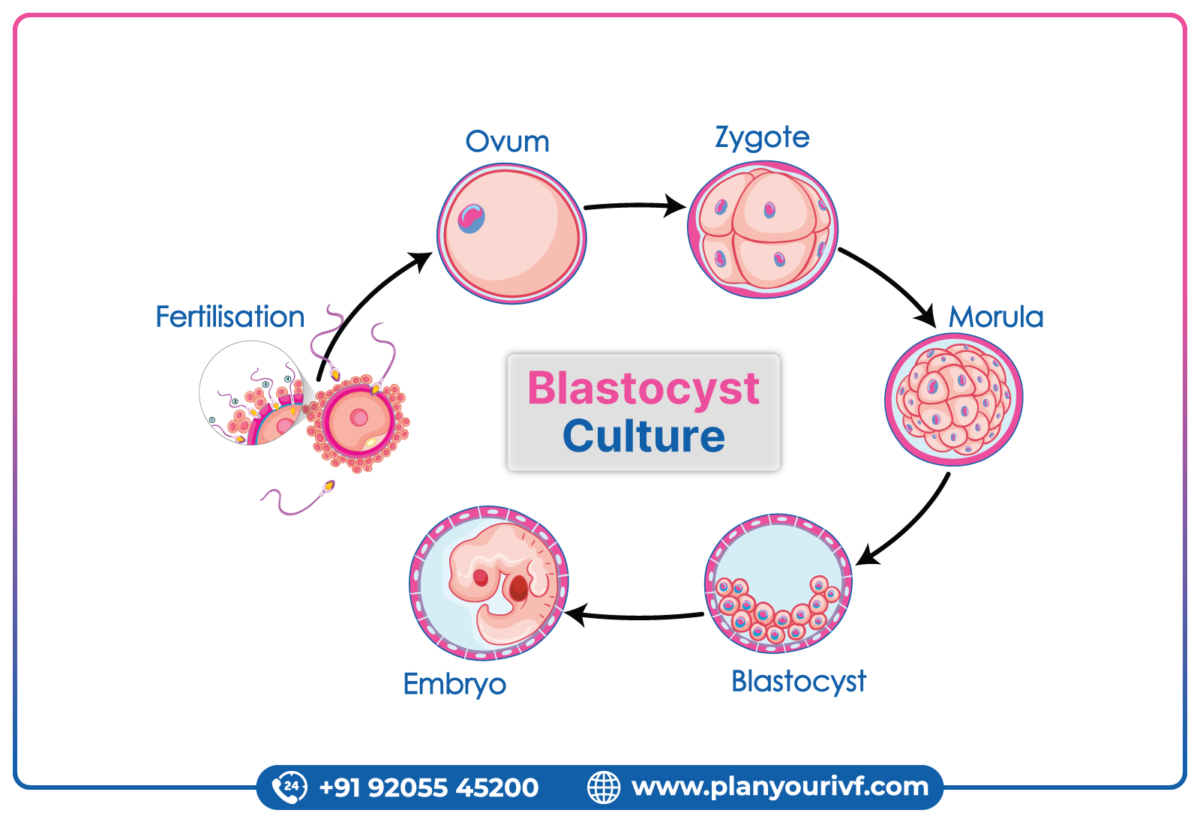Blastocyst Culture
In the world of IVF (In Vitro Fertilization), blastocyst culture is a technique where embryos are allowed to develop for a longer period, typically 5 to 6 days, before being transferred into the uterus.
What’s Blastocyst Culture?
After eggs are collected and fertilized with sperm in the IVF lab, embryos start growing. Normally, embryos are transferred into the womb after about 3 days. But with blastocyst culture, they’re given more time – about 5 to 6 days – to grow until they reach a more advanced stage called the blastocyst.
Process of Blastocyst Culture:
- Egg Retrieval and Fertilization: Eggs are collected from the woman’s ovaries and fertilized with sperm in the laboratory. After fertilization, these eggs become embryos.
- Embryo Culture: Instead of transferring the embryos into the uterus after 2-3 days as done in conventional IVF, the embryos are cultured in the lab for an extended period. They are carefully monitored and provided with optimal conditions to support their growth.
- Selection of Blastocysts: By day 5 or 6, some embryos naturally progress to the blastocyst stage. Blastocysts are more advanced embryos with specialized cell structures, including an inner cell mass and an outer layer known as the trophectoderm. These blastocysts are considered more robust and have a higher chance of implanting in the uterus.
- Blastocyst Transfer: The healthiest blastocysts are selected for transfer into the woman’s uterus. The number of blastocysts transferred is usually limited to reduce the risk of multiple pregnancies while maximizing the chance of successful implantation and pregnancy.
Benefits of Blastocyst Culture:
- Better Selection: Not all embryos make it to the blastocyst stage. Those that do are usually the strongest and healthiest ones. So, by waiting a bit longer, doctors can pick the best embryos for transfer, increasing the chances of pregnancy.
- Natural Timing: In the body, embryos naturally reach the blastocyst stage before implanting into the womb. So, by waiting, we’re just following nature’s plan more closely.
- Reduced Risk of Multiples: By transferring fewer but high-quality blastocysts, the risk of multiple pregnancies like twins or triplets is lower compared to transferring several embryos at an earlier stage.
In a nutshell, blastocyst culture gives embryos a bit more time to grow into strong, healthy blastocysts before they’re transferred into the womb. It’s like giving them a head start on their journey to becoming a baby, and that’s something pretty amazing in the world of IVF.
 +91-9205545200
+91-9205545200  info@planyourivf.com
info@planyourivf.com 



